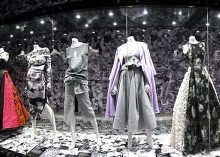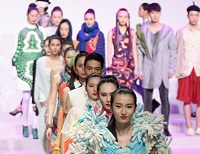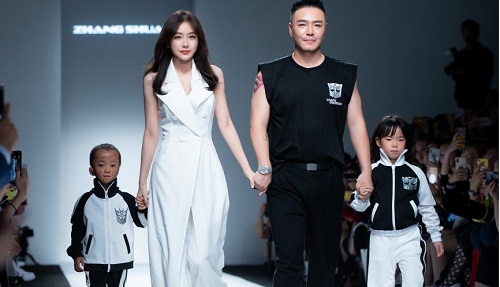FW
From July 03-05, 17,776 visitors attended ISPO Shanghai 2020 to learn about future developments and to experience new products in the segments of outdoor, snowsports, sport trends, running, health & fitness, water sports, and manufacturing & suppliers.
ISPO Shanghai 2020 gained a total of 350 brands to exhibit, hosted more than 50 industry forums and events, and attracted 17,776 visitors. Klaus Dittrich, Chairman & Due to COVID-19, many outdoor and winter sports brands either cancelled or delayed their plans at the beginning of the year and came all the way to ISPO Shanghai to complete their long-awaited launching plans. This also helped ISPO Shanghai to expand its segments of the exhibition this year. In addition, ISPO Shanghai 2020 partnered with IWF Shanghai 2020 and co-located with each other to showcase synergies in the cross-field sports industry.
ISPO Shanghai always crafted dedicated areas that allowed different sportswear and outfits to be presented in a rather intuitive way to the visitors. The Outdoor Lifestyle Village, ISPO Sports Fashion Zone, and Tracker’s Show gave both professionals and enthusiasts chances to take a closer look at products in different scenarios.
The ISPO Outdoor Lifestyle Village showed a variety of fashion outfits which can be used in different occasions, giving sports lovers more choices for outdoor activities. Brands gathered in the ISPO Sports Fashion Zone showcased their most dazzling products featuring both athleisure and sporting performance. The Tracker’s Show presented marathon outfits as well as trail running wear. In addition, it launched an online running challenge with 100,161 runners that finished the program.
The ISPO Lifestyle Stage carried people’s pursuits for sports life. With experts, KOLs, and enthusiasts on the stage, more than 30 discussions were held including brands‘ product launches, mountaineering dialogues, KOL talks, and the award ceremony.
Just weeks after filing for Chapter 11 bankruptcy for its U.S. retail arm, sustainable denim brand G-Star Raw announced a global restructure to restore the balance between physical stores, strategic partners and online presence” and affect 10 percent of its employee base.
The restructuring was a months-long process that it kept confidential until it could inform colleagues, and was a result of the accelerated transition to online methods, which in turn hindered the performance of physical stores. In addition to restructuring its office, G-Star Raw will also restructure its store portfolio in several regions, but stated it will not be exiting any of those regions entirely.
The brand noted it is supporting affected employees and expects to finalize the restructuring within Q3 2020.
G-Star cited financial difficulties from the coronavirus crisis when it filed for bankruptcy earlier this month. According to Apparel Resources, the largest creditor listed in its bankruptcy is its landlord at 475 Fifth Avenue in New York, owed $426,007. In May, the brand also entered into voluntary administration in Australia.
Following a series of cancellations for prominent in-person trade shows such as the Informa Markets Fashion events in Las Vegas and SwimShow in Miami, International Market Centers has cancelled in-person trade shows scheduled in August for Atlanta and Las Vegas. However, permanent showrooms located in IMC’s properties AmericasMart in Atlanta and the World Market Center in Las Vegas would be open for appointments, Maricich said.
An IMC statement forecasted that 50 percent of its showroom tenants would be open during the times the markets were scheduled to be hosted and 40 percent of its traditional buyer base would visit. These markets include Prom & Social Occasion, scheduled Aug. 3–7, Atlanta Apparel, scheduled Aug 4–8, Atlanta Market for gift and home, scheduled to run Aug. 13–18, and Las Vegas Market, scheduled to run Aug. 30–Sept. 8.
To produce a safer environment, IMC said that pre-registration would be required for entry. Temperature screening and use of personal protective equipment will also be required. IMC plans to run its fall markets at AmericasMart on-site.
Sensitive Fabrics by Eurojersey launched its FW 2021-22 collection with its new MIMESIS promotional campaign – I wear, therefore I Am.
The FW 2021-22 ready-to-wear collection takes on a positive significance in its imitation of an ideal form of reality. An aesthetic evolution that is optimistic and oriented towards looking beyond what immediately meets the eye.
An imaginary channel, a sum total of real and imaginary elements, an encounter in which reality captures the imagination and in return gifts us the key colour of the collection, violet, the last colour of the rainbow, the most extreme point of the solar spectrum. It completes a palette of unusual tones and half-tones deriving from a moon-like pearliness, similar to a celadon glaze, in a panorama of bluish greys and purplish nuances. Saturated and complex colour ranges, rich in compositional allusions, timeless cosmic shades which are nevertheless perfect for a unisex collection that encapsulates nature in the high-performing features of Sensitive Fabrics: comfort, flexibility, durability.
Fulgar, a centre of Made in Italy excellence and leader in the manufacture of high performance man-made and ecological yarns has launched a new project in collaboration with NABA, Nuova Accademia di Belle Arti (New Fine Arts Academy).
The company has promoted Future/Lab, a special sustainable supply chain project interpreted by 10 young talents, all third-year students of the NABA three-year Fashion Design diploma.
For this initiative Fulgar has asked the young stylists to choose fabrics exclusively from Italian companies that belong to the sustainable supply chain, produced using ecological yarns from Fulgar’s green portfolio.”
The fabrics the young designers chose are by iLuna, Gipitex, Pontetorto, Luxury Jersey, Maglificio Alto Milanese, Olmetex, Albini Group (Albiate), Jackytex, Arpatex and Limonta, with technical support from Thermore, Framis Italia, Omega Filati, and Nyguard Not Just Any Zipper.
The project will be presented before the end of the year in the context of a series dedicated to sustainability and will also have extensive visibility on the website and Fulgar’s social profiles in the special Future/Lab section.
Diesel is partnering with Swedish chemical company Polygiene, which got its start in garment protection technology during the SARS epidemic in the early 2000s.
The companies worked together on a finishing treatment that prevents 99 percent of viruses—including those that cause COVID-19—from attaching to fabric. Used exclusively in Diesel denim, Polygiene’s ViralOff technology will be applied to a selection of the brand’s Spring/Summer 2021 styles. Diesel has plans to incorporate the technology into additional garments in the future.
This isn’t Diesel’s first foray into anti-viral fashion. In June, the brand incorporated Nearchimica’s protector shield technology into its unisex upfreshing capsule collection that featured Spring 2020 garments updated with an antimicrobial and antibacterial finishing process. The collection included jeans, logo hoodies, T-shirts and long-sleeved shirts.
Antiviral technology has been a top priority in the material innovation industry, as more consumers shift their focus toward safety and hygiene in the time of coronavirus. Turkish denim mill Calik Denim, as well as fabric developer PG Denim and chemical specialist Rudolf, have been working on finishing technologies that offer these kinds of protections.
 The second-largest apparel supplier to the global apparel market, Bangladesh might soon lose its coveted title to Vietnam as its apparel exports declined to just 0.44 per cent against 7.30 per cent export growth achieved by Vietnam in 2019. Since the last few years, the Bangladesh readymade garments sector has been facing multiple challenges such as rise in production costs, labor wages and utility rates. This is making survival difficult for small and medium factories as price of their products does not match production costs. This prevents exporters from covering their operational cost leading to a drastic decline in profit margins.
The second-largest apparel supplier to the global apparel market, Bangladesh might soon lose its coveted title to Vietnam as its apparel exports declined to just 0.44 per cent against 7.30 per cent export growth achieved by Vietnam in 2019. Since the last few years, the Bangladesh readymade garments sector has been facing multiple challenges such as rise in production costs, labor wages and utility rates. This is making survival difficult for small and medium factories as price of their products does not match production costs. This prevents exporters from covering their operational cost leading to a drastic decline in profit margins.
For the last few years, Bangladesh RMG exporters have been focusing more on product costs to achieve desired profit margins. However, buyers recently introduced the open costing approach for price fixation. As per this approach, manufacturers in the ‘A’ category bargain for fair price whereas those in the ‘B’ category bargain for lower price targeting their unused capacity utilization. This makes the product a loss making proposition and shortens its lifecycle in the Bangladesh market.
Identify cost drivers
Every Bangladeshi RMG company has its own cost structure involving cost elements like material cost, salary and wages, utility cost, depreciation of assets, spare part and repair maintenance, other manufacturing overhead, administrative and selling expenses, finance cost, etc. incurred in different cost centers responsible for making the company cost-effective.
depreciation of assets, spare part and repair maintenance, other manufacturing overhead, administrative and selling expenses, finance cost, etc. incurred in different cost centers responsible for making the company cost-effective.
Hence, it is important for the owners of these cost centers to identify their cost drivers. They need to price their products through a standard costing procedure like the CPU (cost per unit) which has a basic formula that says that total cost of production plus total output is equal to cost per unit.
Combine techno-finance knowledge
Bangladesh RMG factories also need combine techno-finance knowledge for perfect costing of their products. For this, manufacturers need to train non-finance professionals in finance and financial professionals in technical issues. A combination of techno finance knowledge will make the price bargain with buyers.
Some buying houses have introduced open costing approach. This entails standard, buyers to have a costing team having technical and finance people. However, not just the technical people deal with open costing from the buyers’ side. The query and format of these technical people is not up to the standard of company cost structure and accounting standard procedure. Hence, buying houses should have a costing team having technical and finance professionals to make the open costing procedure smooth and acceptable for garments manufacturer.
In Bangladesh, all marketing professionals should know the actual cost of their factory. Actual cost shows the actual output, wastage, actual cost structure. Every company should compare the standard cost and actual cost frequently and identify for continuous improvement through process innovation. From the principal of CPU (cost per unit) to optimize the cost, Bangladesh has to work on efficiency. Higher efficiency will help the country absorb the fixed cost resulting in lower CPU.
Involve government and professionals institutes
One drawback of the Bangladesh RMG sector is the lack of proper future analysis. As buyers deal with a number of manufacturers simultaneously for capacity building and future order placement, they usually opt for cheaper products. Hence, most of the RMG factories do not get the expected orders which leads to underutilization of factories. In such a situation, factories opt for low cost products to make maximum utilization of the plant.
Industry professionals in Bangladesh are aware of this costing issue. They need to engage government and professional training institutes to change this training or education system. Their target-oriented initiatives will help the industry to overcome these challenges.
 Known for their artsy, edgy and socially risky designs, Chinese designers like Qiu Hao and his partner Wang Chuqiao (Qiaoqiao) have cemented their position by opening designer boutiques in the country. These collective designer shops such as those on Brand New China (BNC) and Dong Liang have provided Chinese fashion designers diversified retail options. The 540 sq m BNC store houses the largest collection of over 150 Chinese fashion designers under a single roof. Designed by Yung Ho Chang, an architecture professor at MIT, the store’s glass facade allows a view into the store’s interior and customized displays.
Known for their artsy, edgy and socially risky designs, Chinese designers like Qiu Hao and his partner Wang Chuqiao (Qiaoqiao) have cemented their position by opening designer boutiques in the country. These collective designer shops such as those on Brand New China (BNC) and Dong Liang have provided Chinese fashion designers diversified retail options. The 540 sq m BNC store houses the largest collection of over 150 Chinese fashion designers under a single roof. Designed by Yung Ho Chang, an architecture professor at MIT, the store’s glass facade allows a view into the store’s interior and customized displays.
Designer shops like these have been rapidly growing into Tier II cities across China. Many of these shops integrate online retail with offline try-on services, fans’ activities or entertaining promotional experiences.
Lack of service and media exposure
Though the growth of fashion e-commerce has been rapid in China, these boutiques remain critical for Chinese luxury designers as they enable them to personally interact with customers. However, though these designers train their sales staff as communicators and persuaders on the selling floor, most fail to focus on customer service due to budget constraints, says Designer Liu Canming, also a professor at Donghua Uni¬versity.
enable them to personally interact with customers. However, though these designers train their sales staff as communicators and persuaders on the selling floor, most fail to focus on customer service due to budget constraints, says Designer Liu Canming, also a professor at Donghua Uni¬versity.
Many designers also lack media exposure. While designers such as Wang to participate in fashion shows they do so only for showcasing their collections and not selling.
Seeking visibility through fashion shows
A fashion show that is popular with designers is the Shanghai Fashion Week, which provides them a highly visible platform to display their collections. Initiated by the Shanghai Municipal Government and the SFW Organizing Committee since 2003, Shanghai Fashion Week is often criticized for failing to attract international buyers. In 2013, the show, along with the Shanghai Fashion Designer Association, launched a ‘Design by Shanghai’ program during London Fashion Week to promote young Chinese fashion design talent to international buyers and con-sumers.
Another government-supported multi-entity, the Shanghai International Fashion Federation, organized the first Shanghai New Couture Week, April 10-16, 2015, which is an important part of the city development plan. New Couture Week is supported by the Shanghai Promotion Centre of Design, whose goal is to aid the establishment of Shanghai as a world centre for design and creativity, which is in line with the central government’s call for an economic trans¬formation from a labor-centered, industrialized and environmentally unsustainable economy to one driven by service, creativity and personnel.
Offering authentic fashion in familiar style
Fashion foundations and collective showrooms in China also showcase the country’s future fashion shapers. Independent designers organize fashion shows featuring ordinary consumers walking the runway in natural poses and with natural facial expressions. These shows are intentionally held in obscure, using bars, deserted factories, old houses or concert halls.
As Chinese consumers seek authentic fashion in familiar style they are not bothered about the original inspiration for these designs. This allows Chinese designers to be inspired by other art forms or cultures or hire foreign professionals. Though the creativity of these designers can be legitimized by the Chinese market, they can’t be given a collective identity as they have diverse backgrounds and multiple approaches to design and retail.
Asos, which sells workout clothes from the in-house line saw its activewear sales double in the four months through June 30 versus the same time last year. It also saw strong growth in sales of casual clothing and sneakers, helping its total sales to rise 10 per cent over the period despite the pandemic. Sales of evening dresses, formalwear, and day dresses all sank.
In May, US retail chain Kohl’s similarly called out activewear as one of its highlights for the quarter, with sales doubling. Smaller labels such as SETactive and Ten Thousand have reported healthy sales too.
In the US, where the great majority of consumer purchases still happen in stores, widespread store closures have dragged down activewear sales overall. Even powerhouse companies such as Nike and Lululemon have seen their total sales fall as a result of having to shutter many of their physical shops.
But online sales of activewear are proving resilient. In the UK, for example, the amount of activewear appearing online has grown 17 per cent since the start of May compared to the same period last year, according to Edited, a retail technology firm that tracks fashion e-commerce. It found sellouts of new products had risen too. In the US, online new arrivals of activewear did drop 15 per cent as per Edited’s data, but sellouts of new styles jumped more than 100 per cent.
Texworld Paris and its related events will provide a digital platform from September 2020 to support exhibitors. The digital platform will cover each of the The Fairyland for Fashion fairs including Apparel Sourcing, Avantex, Leatherworld, Shawls&Scarves, Texworld and Texworld Denim Paris.
The platform will enable exhibitors from Messe Frankfurt France tradeshows - textile and clothing manufacturers, brands, accessory manufacturers, etc to present their collections and know-how to international buyers through a complete digital networking solution: virtual showroom, matchmaking, definition of needs, etc. Buyers will also profit from a specific section to define their requests and build their collection based on selection criteria designed for the textile world: country, minimum quantities, type of service, certificates, etc.
Available from September 01 on the respective trade fair websites, the platform will be offered for a renewable period of 6 months to exhibitors at the February edition of the Paris trade fairs. It will also help to maintain a working relationship between buyers and manufacturers and support them in their projects between two editions of the Messe Frankfurt France trade fairs.












